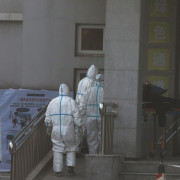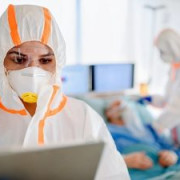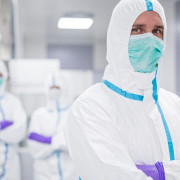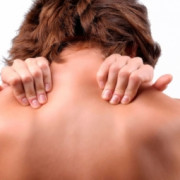Covid 2019 global cases
Содержание:
- What is the new virus?
- Cases at nursing homes and long-term care facilities
- В каких городах и районах Алтайского края выявлен коронавирус на 22 декабря 2020 года
- How do you get infected?
- Mythbusters
- On to the Next One
- Should You Be Worried About the Novel Coronavirus Outbreak?
- Australian Bushfires
- Respiratory hygiene
- Coronaviruses Categorization: What Are Coronaviruses?
- Differences: COVID-19 and the Flu
- Оповещения о движении общественного транспорта
- Оповещения и загруженность остановки
- Как найти рестораны, где предлагают доставку и самовывоз
- Как найти места, где предлагают доставку и самовывоз
- Как следить за новостями из ресторанов
- Как найти и забронировать онлайн-услуги
- How does it compare with other viruses?
- The World Works from Home
- What you can do
What is the new virus?
SARS-CoV-2 is a coronavirus that causes coronavirus disease 2019 (COVID-19). Coronaviruses are a family of viruses that target and affect mammals’ respiratory systems. According to their specific characteristics, there are four main ranks, or genera, of coronaviruses: alpha, beta, delta, and gamma.
Most of these only affect animals, but a few can also pass to humans. Those that are transmissible to humans belong to only two of these genera: alpha and beta.
Only two coronaviruses have previously caused global outbreaks. The first of these was the SARS coronavirus — responsible for severe acute respiratory syndrome (SARS) — which started spreading in 2002 in China.
The SARS virus epidemic primarily affected the populations of mainland China and Hong Kong, and it died off in 2003.
Cases at nursing homes and long-term care facilities
Coronavirus cases have been reported in more than 28,000 nursing homes and other long-term care facilities, according to data collected by The New York Times from states, counties, the federal government and facilities themselves. More than 788,000 residents and employees of those homes have been infected, and more than 106,000 have died. That means that more than 35 percent of deaths from the virus in the United States have been tied to nursing homes and other long-term care facilities.
Read more about the isolation, depression and atrophy facing many nursing home residents as lockdowns persist.
“This disease creates the potential for a perfect storm in a long-term care facility — large groups of vulnerable people living together and a highly transmissible virus that may not cause symptoms in those who care for them,” said Dr. Daniel Rusyniak, the chief medical officer for Indiana’s state social services agency.
|
Cases |
Location |
|
|---|---|---|
|
Brighton Rehabilitation & Wellness Center |
466 |
Beaver, Pa. |
|
Hebrew Home of Greater Washington |
458 |
Rockville, Md. |
|
North Ridge Health and Rehab |
456 |
New Hope, Minn. |
|
Fair Acres Geriatric Center |
439 |
Lima, Pa. |
|
Cedarbrook Senior Care and Rehabilitation |
401 |
Allentown, Pa. |
|
Bergen New Bridge Medical Center nursing home |
379 |
Paramus, N.J. |
|
Conestoga View Nursing and Rehabilitation |
329 |
Lancaster, Pa. |
|
Charlotte Hall Veterans Home |
321 |
Charlotte Hall, Md. |
|
Glendora Grand skilled nursing |
309 |
Glendora, Calif. |
|
New Jersey Veterans Memorial Home at Menlo Park |
302 |
Edison, N.J. |
В каких городах и районах Алтайского края выявлен коронавирус на 22 декабря 2020 года
Распределение новых случаев заражения коронавирусом жителей по районам Алтайского края:
- Барнаул – 61,
- Бийск – 19,
- Рубцовск – 17,
- Славгород – 8,
- Заринск, Локтевский район – по 5 заболевших,
- Белокуриха, Михайловский, Павловский, Ребрихинский, Шипуновский районы – по 4 заболевших,
- Алейск, Благовещенский, Завьяловский, Калманский, Первомайский, Поспелихинский, Родинский районы – по 3 заболевших,
- Новоалтайск, Алейский, Волчихинский, Заринский, Змеиногорский, Зональный, Ключевский, Косихинский, Кулундинский, Кытмановский, Мамонтовский, Новичихинский, Петропавловский, Романовский, Рубцовский, Тальменский, Тогульский, Третьяковский, Тюменцевский, Усть-Пристанский, Целинный районы – по 2 человека,
- Баевский, Бийский, Бурлинский, Залесовский, Каменский, Курьинский, Немецкий национальный, Смоленский, Советский, Табунский, Топчихинский, Троицкий, Угловский, Усть-Калманский, Чарышский, Шелаболихинский районы – по 1 человеку.
Всего заболело коронавирусом в городах и районах Алтайского края:
Барнаул – 12363, Алейск – 474, Алейский район – 144, Алтайский район – 107, Баевский район – 84, Белокуриха – 226, Бийск – 2461, Бийский район – 177, Благовещенский район – 387, Бурлинский район – 229, Быстроистокский район – 47, Волчихинский район – 209, Егорьевский район – 127, Ельцовский район – 6, Завьяловский район – 140, Залесовский район – 226, Заринск – 965, Заринский район – 119, ЗАТО Сибирский – 73, Змеиногорский район – 455, Зональный район – 129, Калманский район – 242, г. Камень-на-Оби – 189, Каменский район – 145, Ключевский район – 200, Косихинский район – 129, Красногорский район – 33, Краснощековский район – 87, Крутихинский район – 94, Кулундинский район – 379, Курьинский район – 143, Кытмановский район – 79, Локтевский район – 371, Мамонтовский район – 140, Михайловский район – 399, Немецкий национальный район – 151, Новичихинский район – 119, Новоалтайск – 1079, Павловский район – 311, Панкрушихинский район – 93, Первомайский район – 662, Петропавловский район – 125, Поспелихинский район – 218, Ребрихинский район – 260, Родинский район – 133, Романовский район – 79, Рубцовск – 1947, Рубцовский район – 264, Славгород – 759, Смоленский район – 161, Советский район – 78, Солонешенский район – 72, Солтонский район – 30, Суетский район – 26, Табунский район – 112, Тальменский район – 628, Тогульский район – 114, Топчихинский район – 212, Третьяковский район – 83, Троицкий район – 197, Тюменцевский район – 101, Угловский район – 80, Усть-Калманский район – 91, Усть-Пристанский район – 131, Хабарский район – 82, Целинный район – 117, Чарышский район – 41, Шелаболихинский район – 102, Шипуновский район – 226, Яровое – 317.

How do you get infected?
- The main route of transmission is respiratory droplets and close contact.
- When you sneeze or cough, you send out droplets of fluid from your nose and mouth.
-
Those droplets can carry infections, and when they enter someone else’s enter the eyes, nose
or mouth, the infection can make them sick. This is the way the flu and many viruses are
spread. - Most often, you need to be close to the person (within 6 feet) for it to spread this way.
-
There is the possibility of aerosol transmission when exposed to high concentration aerosol
for a long time in a relatively closed environment. -
The WHO has stated that the risk of spread from someone without symptoms is «very low» and
that fecal transmission is «low».
Mythbusters
- COVID-19 virus can be transmitted in areas with hot and humid climates.
- Cold weather and snow CANNOT kill the new coronavirus.
- Taking a hot bath does not prevent the new coronavirus disease.
- The new coronavirus CANNOT be transmitted through mosquito bites.
-
Are hand dryers effective in killing the new coronavirus?
No. Hand dryers are not effective in killing the 2019-nCoV. -
Can an ultraviolet disinfection lamp kill the new coronavirus?
UV lamps should not be used to sterilize hands or other areas of skin as UV radiation can cause skin irritation. -
Can spraying alcohol or chlorine all over your body kill the new coronavirus?
No. Spraying alcohol or chlorine all over your body will not kill viruses that have already entered your body. -
Do vaccines against pneumonia protect you against the new coronavirus?
No. Vaccines against pneumonia, such as pneumococcal vaccine and Haemophilus influenza type B (Hib) vaccine, do not provide protection against the new coronavirus. -
Can regularly rinsing your nose with saline help prevent infection with the new coronavirus?
No. There is no evidence that regularly rinsing the nose with saline has protected people from infection with the new coronavirus. -
Can eating garlic help prevent infection with the new coronavirus?
Garlic is a healthy food that may have some antimicrobial properties. However, there is no evidence from the current outbreak that eating garlic has protected people from the new coronavirus. -
Are antibiotics effective in preventing and treating the new coronavirus?
No, antibiotics do not work against viruses, only bacteria.
On to the Next One
After the wild ride that was 2020, many people are wondering what 2021 will have in store.
In the first half of the year, vaccine distribution will surely take center stage. As well, economic recovery will be in focus as physical businesses resume more typical activity and regions slowly open up travel and tourism again.
Much like the financial crisis of 2008 was an inflection point for the economy, the COVID-19 pandemic has changed the course of human history. Chaos can breed opportunity, and even though unemployment spiked to record highs in the U.S., new business applications did as well.
Will things return to “normal”? As the many twists and turns of the past year have demonstrated, our complex, interconnected world is far from static. The next black swan is always just around the corner.

Outbreaks of new (novel) virus infections among people are always public health concerns. Public health officials, scientists, researchers, media and the public should take this current COVID-19 outbreak seriously and monitor it closely. According to the Centers for Disease Control and Prevention (CDC), the risk to individuals is dependent on exposure. To date, some people will have an increased risk of infection, for example healthcare workers caring for COVID-19 patients and other close contacts, as well as immunocompromised individuals. For the general American public, who are unlikely to be exposed to this virus, the immediate health risk from COVID-19 is considered low at this time.It’s understandable that some may be overwhelmed, or even frightened, by news about the outbreak. What can one do about these worries and concerns? One of the most important things that can be done is to monitor reputable sources like the WHOThe rapid dissemination of information, including misinformation, during an outbreak is a relatively recent development. Facebook, Twitter, Instagram and Snapchat were still years away from being founded in 2002, when severe acute respiratory syndrome (SARS) rattled southern China, infecting more than 8,000 people and killing nearly 800, including 44 Canadians. In today’s age of social media, there are a plethora of sites from which anyone can obtain information, and many of them are not credible or vetted by medical or scientific experts. A misinformed tweet, post or photo can easily convince someone to disregard proper hygiene or create shock value about the risk of contracting an illness.It might be worthwhile to tune out social media or other non-reputable sources if it creates panic. I always tell my students, friends and family members that “microbes don’t read the book” with regards to our understanding them. The microbes don’t read or listen to social media either. Try to stay informed, and listen to experts and sources that do offer facts, but not sensationalism.When I was working on my Ph.D. dissertation regarding MRSA adaptationSRT
Australian Bushfires
For some in the Southern Hemisphere who ushered in the new year first, it started on fire.
Reuters assessed the scale of the damage caused by bushfires across Australia. In fact, total burned areas reached 18.6 million hectares (186,000km²) by March, bigger than the total land mass of entire countries like Cuba.
Here’s the damage done in the state of New South Wales alone, compared to previous years:

While bushfires are common in Australia, this year, dry conditions fueled the flames. The fires raged for nearly 80 days, displacing or killing nearly 3 billion animals—a devastating biodiversity loss for the country.
Graphic #2 ⟩⟩ January 2020
Respiratory hygiene
-
Health organizations recommended that people cover their mouth and nose with a tissue when
coughing or sneezing (which should then be disposed of immediately), or with a sleeve if a
tissue is not available. -
The use of surgical masks by those who may be infected has also been recommended, as they
can limit the volume and travel distance of expiratory droplets dispersed when talking,
sneezing, and coughing. -
There is no evidence to show that the wearing of surgical masks by uninfected people at low
risk is effective. -
Only China has specifically recommended the use of masks by healthy members of the public,
while face masks have been widely used by healthy people in Hong Kong, Japan, Malaysia, and
Singapore.
The first coronavirus was isolated in 1937. Some cause illness in people and others circulate among other animals, including camels, cats and bats. Since its discovery, related coronaviruses have been found to infect cattle, pigs, horses, turkeys, cats, dogs, rats and mice. The first human coronavirus was cultured in the 1960s from nasal cavities of people with the common cold. The 4 major categories of coronavirus are known by the Greek letters alpha, beta, delta and gamma. Only alpha and beta coronaviruses are known to infect humans. These viruses spread through the air and are responsible for about 10-30% of colds worldwide. Long known to cause upper respiratory infections, coronaviruses were not felt to significantly cause pneumonia until relatively recently. Seven human coronavirusesCoronaviruses are zoonotic, meaning they can be transmitted between animals and people, but most infect only their specific animal host. Rarely, animal coronaviruses can evolve to infect and spread among people. This was the case with Severe Acute Respiratory Syndrome Coronavirus (SARS-CoV) and Middle East Respiratory Syndrome Coronavirus (MERS-CoV). SARS killed nearly 10% of the 8,096 people who fell ill in 29 countries. A total of 774 people died, according to the World Health Organization. MERS is even more deadly, claiming more than 30% of people it infects. Unlike SARS, outbreaks of MERS are still occurring, NIAID Director Anthony Fauci saysThese viruses spread similar to the flu virus, and past MERS-CoV and SARS-CoV outbreaks have been complex, requiring comprehensive public health responses. The rapid public health responses to these outbreaks were able to quickly determine that the SARS-CoV genome sequence is different from all other known coronaviruses and that it was first transmitted from civet cats to humans, though bats were determined to be the reservoir. Scientists also quickly found that MERS-CoV spread from dromedary camels to humans. Therefore, it’s important to briefly discuss coronavirus genetics.
Differences: COVID-19 and the Flu
Cause
COVID-19: Caused by the 2019 coronavirus, also known as SARS-CoV-2.
Flu: Caused by any of several different types and strains of influenza viruses. Different strains circulate each year.
Symptoms
COVID-19: Many people infected with the coronavirus do not feel sick or have any symptoms at all, but they can still transmit the coronavirus to other people. Review the full list of symptoms.
Unlike the flu, COVID-19 can sometimes cause a person to suddenly lose their sense of smell (anosmia) or taste (ageusia).
Flu: Flu does not typically affect a person’s sense of smell or taste.
Treatment
COVID-19: Antiviral medications and other therapies are being tested to see if they can effectively address symptoms and shorten the duration of the illness. Currently, effective treatments are only available in an intravenous form, so they are not prescribed to patients outside of a hospital setting.
Flu: Oral antiviral medications can address symptoms and sometimes shorten the duration of the illness. Because they are given by mouth, these antiviral therapies can be prescribed for patients who are not hospitalized as well as for those in the hospital.
Vaccine
COVID-19: No vaccine is available at this time, though development and testing are in progress.
Flu: A vaccine is available and effective in preventing some of the most dangerous types or to reduce the severity or duration of the flu. It is very important to get vaccinated for the flu this year.
Оповещения о движении общественного транспорта
В некоторых странах и регионах вы будете получать оповещения в приложении при навигации, если на маршруте вы можете столкнуться с ограничениями, связанными с пандемией COVID-19. Информацию об этом предоставляют государственные и муниципальные учреждения.
Оповещения и загруженность остановки
Вы можете получать оповещения в следующих случаях:
- если правительственные распоряжения относительно масочного режима или закрытия объектов влияет на работу общественного транспорта;
- если на вашем маршруте находятся контрольно-пропускные пункты, созданные на время пандемии коронавируса, или возможны другие ограничения, действующие на границе;
если вы составили схему проезда к медицинскому учреждению или центру диагностики. В этом случае вы получите напоминание позвонить, чтобы узнать о доступности и правилах учреждения.
Загруженность остановки
Если вы пользуетесь общественным транспортом, вам может понадобиться узнать о загруженности остановки. Если эта информация доступна, она будет показана под названием остановки. Информация основана на данных о маршрутах общественного транспорта.
Как найти рестораны, где предлагают доставку и самовывоз
Рестораны, которые предлагают еду с доставкой или навынос, теперь можно специально искать в Google Картах. Если вам нужен конкретный ресторан или вы ищете блюда определенной кухни, вы можете посмотреть, какие варианты заказа доступны: еда в заведении, еда на вынос или доставка.
Как найти места, где предлагают доставку и самовывоз
Чтобы найти рестораны, где можно заказать еду с доставкой или навынос, выполните следующие действия:
- Откройте приложение «Google Карты» на мобильном устройстве.
- Уточните критерии поиска:
- Под строкой поиска выберите » Еда навынос» или » Доставка еды».
- Введите запрос «еда навынос» или «доставка еды» в строку поиска.
В результатах поиска будут показаны рестораны, которые предлагают такую возможность.
Как следить за новостями из ресторанов
Представители ресторанов могут публиковать в профиле компании актуальные новости, связанные с COVID-19.
Если такие публикации есть, они показываются в специальном разделе прямо под информацией о компании.
Как найти и забронировать онлайн-услуги
Когда вы ищете определенную компанию или мероприятие, например «занятия йогой», «уроки игры на пианино» и т. д., то можете забронировать найденную онлайн-услугу непосредственно в Google. Если компания предлагает такие услуги и добавила информацию об этом в сервисе «Google Мой бизнес», в ее профиле вы увидите следующее:
- Онлайн-занятия
- Расчет стоимости онлайн
- Онлайн-приемы
Если вам нужны услуги с личным посещением, откройте Google Поиск, Карты или обратитесь к Google Ассистенту, чтобы оформить бронирование или запись на услугу в местной компании.
Как забронировать онлайн-услуги
How does it compare with other viruses?
Researchers from Chinese institutions have used state-of-the-art genome sequencing tools to identify the DNA structure of the novel coronavirus.
It has emerged that SARS-CoV-2 is most similar to two bat coronaviruses: bat-SL-CoVZC45 and bat-SL-CoVZXC21. Its genomic sequence is 88% the same as theirs.
The same study shows that the new virus’s RNA is about 79% the same as that of the SARS coronavirus and approximately 50% the same as that of the MERS virus.
Earlier research suggested that pangolins may have been the initial propagators of SARS-CoV-2 among humans, as the virus’s genomic sequence appears to be 99% the same as that of a coronavirus specific to these animals.
More recent research, however, including a study from October 2020, has highlighted that it is not pangolins, bats, or other animals that are to blame for epidemics or pandemics affecting humans. Instead, the real triggers are societal structures and society-driven human-animal contact.
The researchers state that placing blame on wildlife can lead to unnecessary and harmful culling, slaughter, and loss of wildlife biodiversity.
The World Works from Home
The dramatic shift to staying at home has resulted in a much higher reliance on technology for many people. Nowhere were these trends exemplified more than the rise of video conferencing software Zoom—the platform was used for work, education, and socializing alike.
As monthly users swelled, those who typically take to the skies also declined in a steep fashion. In this graphic from May, we noted that Zoom’s market capitalization had skyrocketed to eclipse the top seven airlines by revenue, combined.

As remote work became the new normal for significant shares of the workforce, unique benefits of this adjusted lifestyle arose, but it didn’t come without its challenges.

Perhaps the most significant lasting change from the COVID-19 pandemic might be the adoption of flexible work, even by firms that resisted the trend in the past.
If many employees continue to work remotely, even part of the time, then that will have a big impact on everything from the commercial office market to the bottom line of SaaS companies that help facilitate remote collaboration among teams.
Graphic #13 ⟩⟩ July 2020
What you can do
Experts’ understanding of how the Covid-19 works is growing. It seems that there are four factors that most likely play a role: how close you get to an infected person; how long you are near that person; whether that person expels viral droplets on or near you; and how much you touch your face afterwards. Here is a guide to the symptoms of Covid-19.
You can help reduce your risk and do your part to protect others by following some basic steps:
Keep your distance from others. Stay at least six feet away from people outside your household as much as possible.
Wear a mask outside your home. A mask protects others from your germs, and it protects you from infection as well. The more people who wear masks, the more we all stay safer.
Wash your hands often. Anytime you come in contact with a surface outside your home, scrub with soap for at least 20 seconds, rinse and then dry your hands with a clean towel.
Avoid touching your face. The virus can spread when our hands come into contact with the virus, and we touch our nose, mouth or eyes. Try to keep your hands away from your face unless you have just recently washed them.
Here’s a complete guide on how you can prepare for the coronavirus outbreak.






